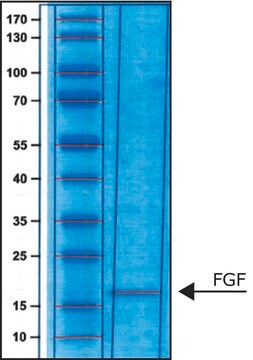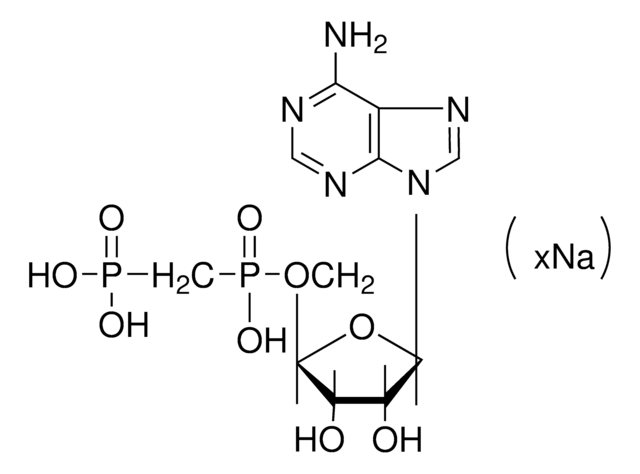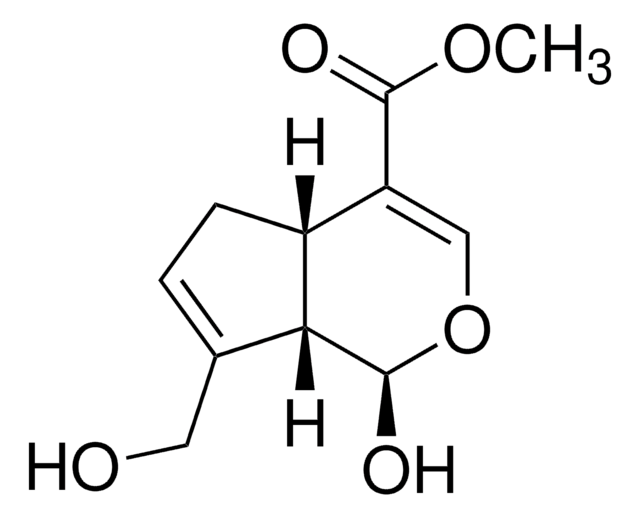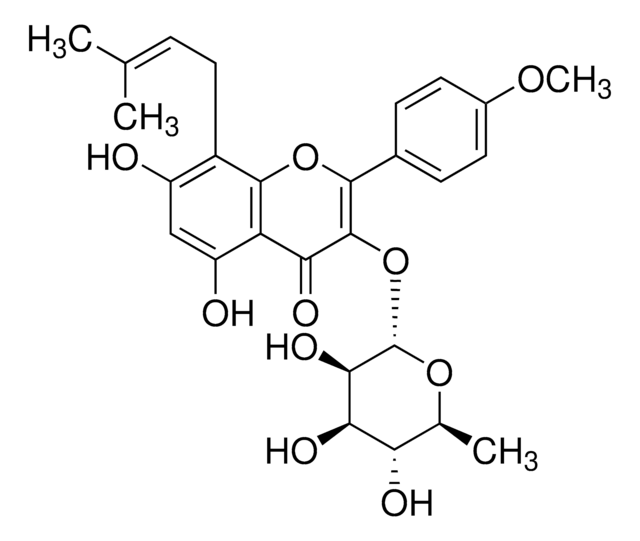F7301
Fibroblast Growth Factor-18 human
>95% (SDS-PAGE and HPLC), recombinant, expressed in E. coli, lyophilized powder
Sinónimos:
FGF-18
About This Item
Productos recomendados
biological source
human
Quality Level
recombinant
expressed in E. coli
assay
>95% (SDS-PAGE and HPLC)
form
lyophilized powder
potency
≤0.5 ng/mL
mol wt
predicted mol wt 21.2 kDa
packaging
pkg of 25 μg
storage condition
avoid repeated freeze/thaw cycles
impurities
endotoxin, tested
UniProt accession no.
storage temp.
−20°C
Gene Information
human ... FGF18(8817)
General description
Biochem/physiol Actions
Physical form
Analysis Note
signalword
Warning
hcodes
Hazard Classifications
Eye Irrit. 2 - Skin Irrit. 2 - STOT SE 3
target_organs
Respiratory system
Storage Class
11 - Combustible Solids
wgk_germany
WGK 2
flash_point_f
Not applicable
flash_point_c
Not applicable
Elija entre una de las versiones más recientes:
¿Ya tiene este producto?
Encuentre la documentación para los productos que ha comprado recientemente en la Biblioteca de documentos.
Artículos
Fibroblast growth factors in cell culture and various growth factors for your research
Nuestro equipo de científicos tiene experiencia en todas las áreas de investigación: Ciencias de la vida, Ciencia de los materiales, Síntesis química, Cromatografía, Analítica y muchas otras.
Póngase en contacto con el Servicio técnico









